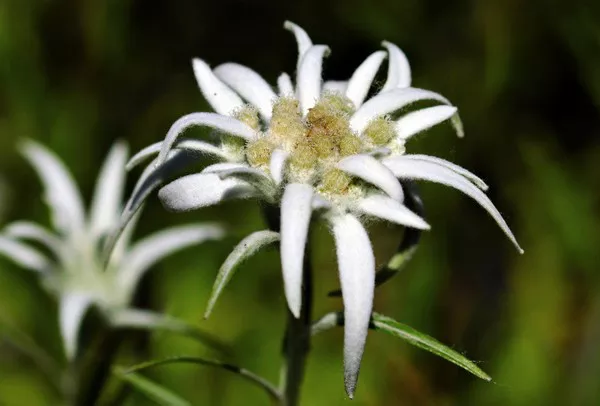In the realm of gardening and floral crafts, marigold flowers stand out for their vibrant hues and versatility. Whether you’ve cultivated a bountiful marigold garden or received a fresh bouquet, preserving the beauty of marigold flowers through drying is a rewarding endeavor.
Understanding Marigold Flowers
Marigold flowers, known for their warm tones of yellow, orange, and gold, belong to the Tagetes genus. These hardy annual plants are favored for their resilience, making them a popular choice for both novice and experienced gardeners. Beyond their ornamental value, marigolds have cultural significance and are often used in traditional ceremonies and celebrations. Drying marigold flowers allows enthusiasts to extend their enjoyment beyond the blooming season.
Methods for Drying Marigold Flowers
Air Drying
The simplest and most traditional method for drying marigold flowers is air drying. Begin by harvesting marigold blooms in the morning when the dew has evaporated but before the sun is at its peak. Remove any excess foliage from the stems, bundle the flowers together, and hang them upside down in a dry, dark, and well-ventilated area. This process typically takes one to two weeks, and the dried marigold flowers can then be used for various purposes.
Silica Gel Drying
Silica gel is a desiccant that absorbs moisture effectively, making it an ideal choice for preserving the vibrant colors of marigold flowers. To use this method, place a layer of silica gel in a shallow container, gently rest the marigold blooms on top, and cover them with more silica gel. Seal the container and allow the flowers to sit for several days. The silica gel can be reused by drying it in the oven. This method is particularly suitable for delicate marigold varieties.
Pressing Marigold Flowers
Pressing marigold flowers is a timeless technique that retains their flat, delicate form. Arrange the flowers between sheets of absorbent paper, placing weight on top to press them evenly. This method is well-suited for crafting purposes, such as creating pressed flower art or incorporating marigolds into homemade greeting cards. The pressed marigold flowers should be stored in a dry environment to prevent rehydration.
Microwave Drying
Microwave drying is a quick and efficient method for preserving marigold flowers. Place the blooms between two paper towels and microwave in short bursts at a low setting until they are thoroughly dried. It’s crucial to monitor the process closely to prevent scorching. While this method may not retain colors as vibrantly as air drying, it is a convenient option when time is of the essence.
Preserving Color and Fragrance
Maintaining the vivid colors and distinctive fragrance of marigold flowers during the drying process requires careful attention to detail. Here are some tips to enhance the preservation of marigold attributes:
Harvest at the Right Time
Optimal harvest time is essential for preserving color and fragrance. Choose a sunny day and harvest the marigold flowers in the morning after the dew has evaporated. This ensures that the blooms contain the highest concentration of essential oils, contributing to their fragrance.
Avoid Direct Sunligh
When air drying marigold flowers, choose a location away from direct sunlight. Exposure to intense sunlight can lead to color fading. A cool, dark, and well-ventilated space is ideal for preserving both color and fragrance during the drying process.
Quick Drying Methods
If preserving vibrant colors is a top priority, consider quick-drying methods like microwave drying or silica gel. These methods reduce the exposure time, minimizing the chances of color degradation. However, it’s essential to strike a balance between speed and maintaining the flowers’ integrity.
Proper Storage
Once the marigold flowers are dried, proper storage is crucial. Store them in airtight containers or resealable bags in a cool, dark place. Adding a sachet of dried lavender or rose petals can enhance the fragrance of the stored marigold flowers.
Creative Uses for Dried Marigold Flowers
Now that you’ve successfully dried your marigold flowers, the possibilities for creative applications are vast. Consider the following ideas to make the most of your dried marigold blooms:
Potpourri
Combine dried marigold flowers with other aromatic elements such as lavender, rose petals, and citrus peels to create delightful potpourri. Place the mixture in decorative bowls or sachets to add a natural and fragrant touch to your living spaces.
Decorative Arrangements
Incorporate dried marigold flowers into dried floral arrangements. Combine them with other dried blooms, grasses, or seed pods for unique and long-lasting bouquets. These arrangements can be used as centerpieces or home decor accents.
Herbal Teas
Some varieties of marigold, such as Calendula officinalis, are known for their culinary and medicinal uses. Use dried marigold petals to make herbal teas that are not only visually appealing but also boast potential health benefits.
DIY Candles and Crafts
Embed dried marigold flowers into homemade candles or use them in crafting projects such as candle-making, soap-making, or creating botanical art. The vibrant colors and texture of dried marigold blooms can add a unique aesthetic to your creative endeavors.
Conclusion
Drying marigold flowers is a rewarding and practical skill that allows you to extend the beauty and fragrance of these vibrant blooms beyond their natural lifespan. Whether you choose traditional air drying, silica gel methods, pressing, or microwave drying, each technique offers unique benefits. By paying attention to harvest timing, drying methods, and storage, you can preserve the color and fragrance of marigold flowers successfully. Embrace the creative possibilities of dried marigold blooms in potpourri, decorative arrangements, herbal teas, and various DIY projects, adding a touch of nature’s beauty to your home throughout the year.


